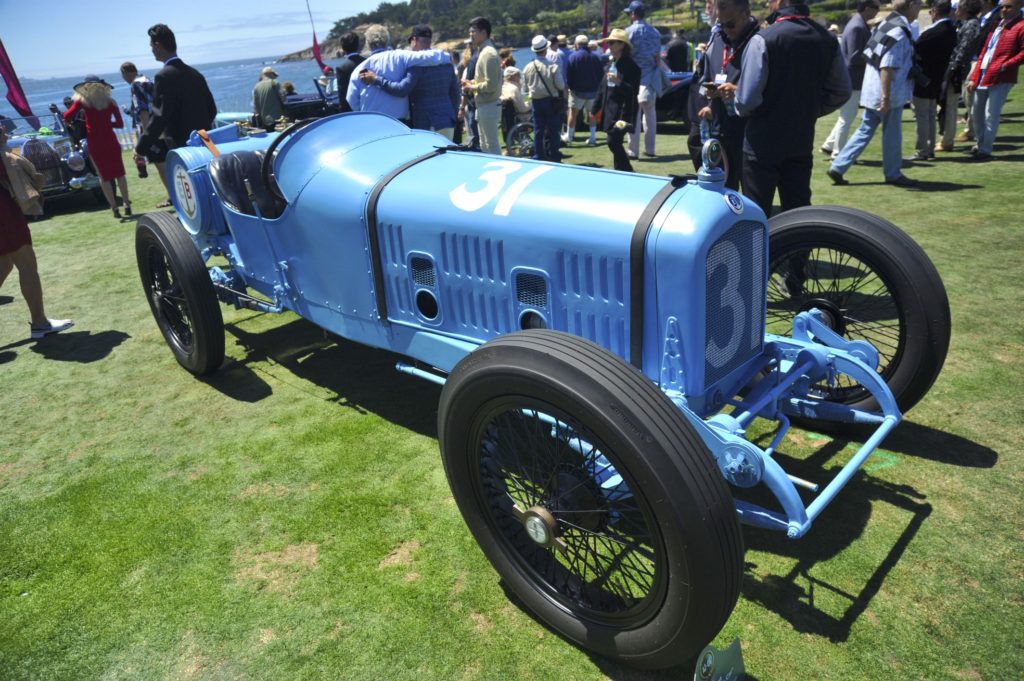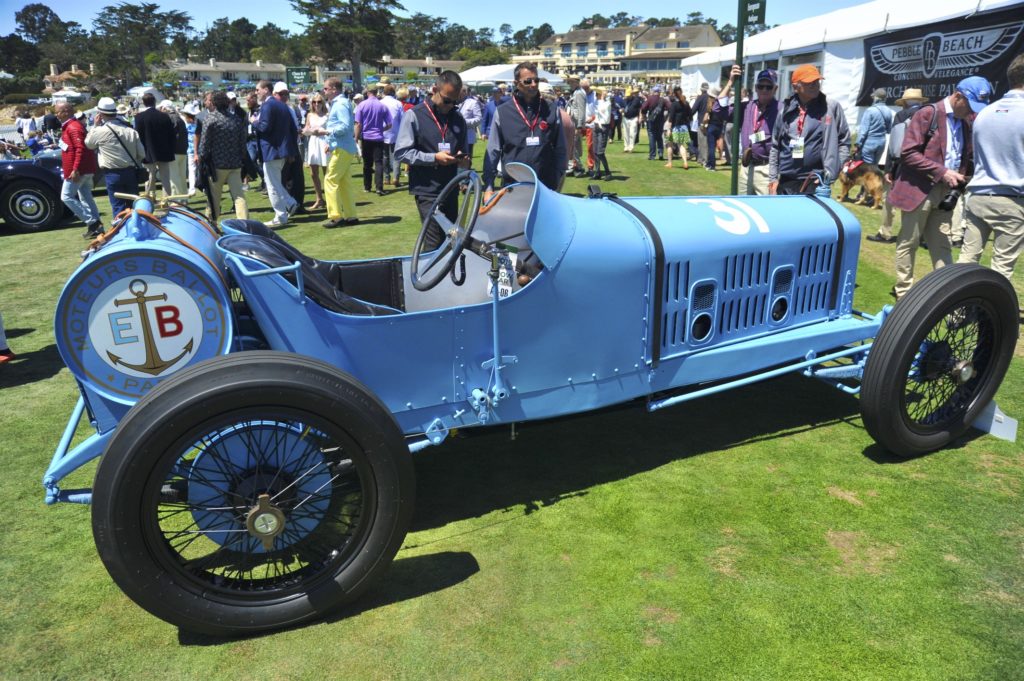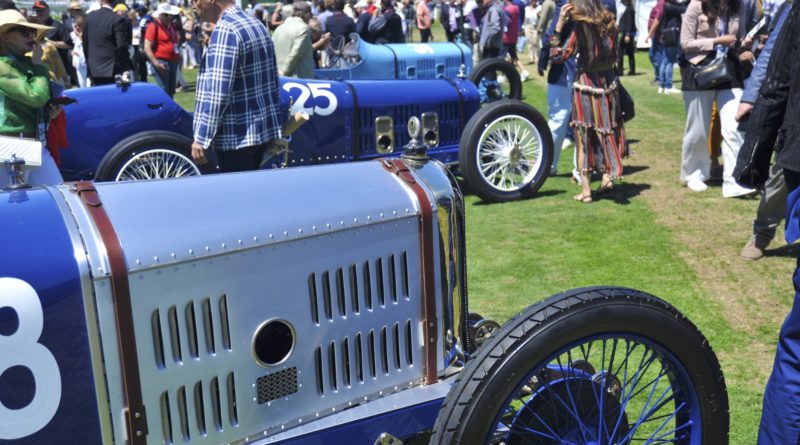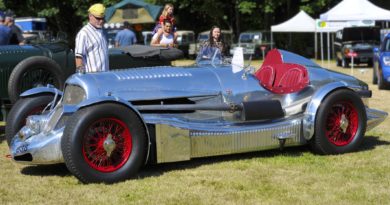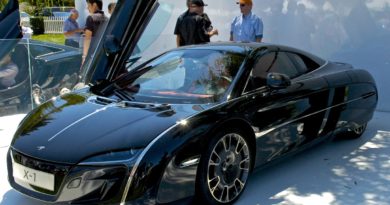Early Indy 500 Race Cars
George Wingard collects pre-1940s race cars, typically the earlier the better. His real passion appears to be centered around early Indianapolis 500 race cars. Several of his racers have made appearances at the prestigious Pebble Beach Concours d’Elegance. In 2017 and 2019, three of his cars made it, and I happened to be there.

Pat Gould, son-in-law and collection caretaker for owner George Wingard, nervously watches as the judges pour over his car at the 2017 Pebble Beach Concours d’Elegance
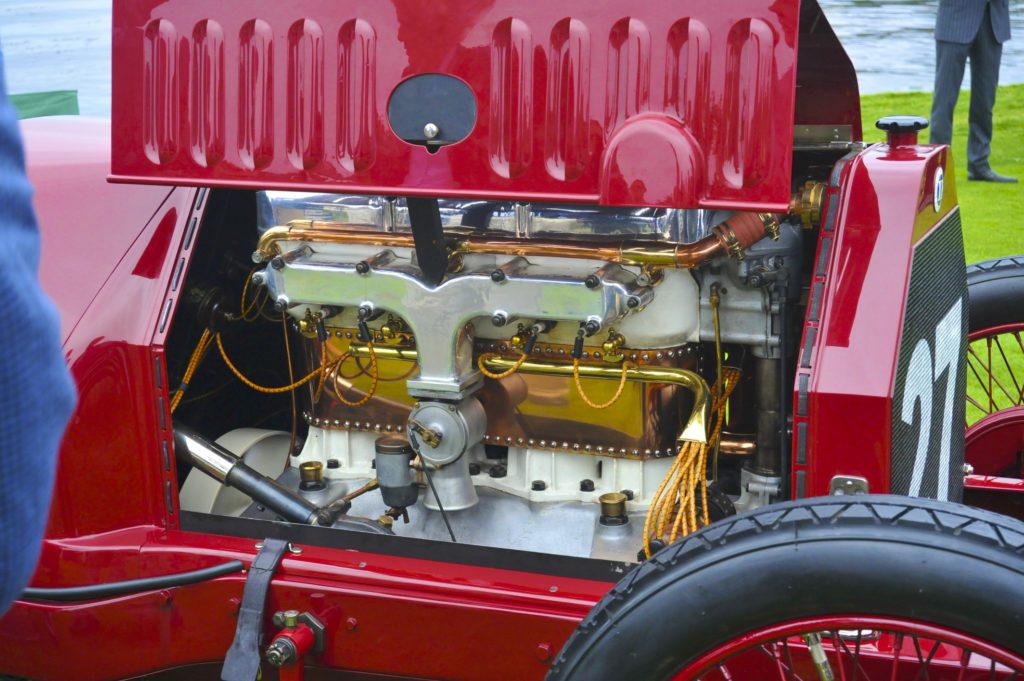
I couldn’t pass up showing you this classic candid of the owner’s son-in-law, cleaning cloth in hand, helplessly standing by while judges try to pick apart his labor of love. As one of the featured marques at the 2017 Pebble Beach Concours, there were no less than seventeen Isotta Fraschini cars in the judging. Six of these Tipo IM racers were built in 1913 and three of them, including this one, raced that year at the Indianapolis 500. It was running sixth at 300 miles when a broken drive chain forced its retirement. Only two of these cars are known to survive. It’s powered by a 120 HP 4-cylinder engine designed by Giuseppe Gaetano Stefanini, who also pioneered use of the overhead camshaft.
Owner George Wingard restored this car himself after purchasing it in 1980 from a B.J. Pollard, who had owned the car since 1939. Mr. Wingard has an extensive collection focusing on early race cars, including those from the Indianapolis 500. He has even raced his vintage Indy cars at the legendary Indianapolis Speedway. Jay Leno says George has one of the finest car collections in America in little Eugene, Oregon, and his several class wins at Pebble Beach and elsewhere would seem to enforce Jay’s assertion. I’m not sure whether I would want to be the son-in-law responsible for all that or not.
In 2019, George Wingard’s pre-war race cars made another appearance at Pebble, this time in the form of two Ballot racers. The 2 liter Ballot owned by George (the title photo featured at top) raced successfully in Europe between 1921 and 1924. The number 25 1920 Ballot 3-liter racer, also owned by George (also in the featured photo) finished second at the 1920 Indianapolis 500 with driver Rene Thomas.
The powder blue 1919 5-liter straight 8 (below) boasted dual overhead cams and was one of four Ballots built to race at Indianapolis. Rene Thomas qualified this car on the pole at 104.7 mph. While all four cars qualified in the first two rows, the cars suffered from defective wheel spokes and the best they could muster was a fourth.
The Ballot’s were largely the creation of Swiss engineering guru Ernest Henry for Ernest Ballot. Ballot gained wealth and notoriety by building engines for other car manufacturers in 1900s Paris and aeroengines during WW I. Henry had spent several years at both Bugatti and Peugeot. When driver Rene Thomas introduced the two Ernests just 104 days before the 1919 Indy 500, a bond to build race cars was cemented. Amazingly, four cars were then designed and built by Henry in those proceeding 100 days for that year’s Indy 500.
Although Rene had won the Indy 500 in 1914, Ballot was a temperamental sort so winning or losing often left Rene in and out of the Ballot doghouse through no fault of his own. Nevertheless, Henry’s genius with engine and chassis design made the previously unknown Ballots world famous. Henry’s engine design pointed the way for the high-revving OHC engines of the next 30 years. Ballot survived until the downturn of the late ‘20s, and was eventually purchased by Hispano-Suiza in 1931.
